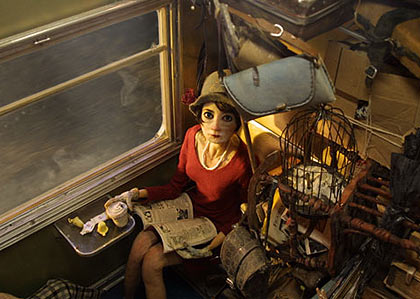Nov 06 2012
MORE…Realism?
After all, this is what I wanted. I wanted to leave Denver, move the to the Big Apple, and become the person I thought I couldn’t be 1600 miles west.
MORE, created by Mark Osborne, in some ways depicts my reality. I wanted big and I got BIG. NYC it was. It’s not like humanity doesn’t work that way. Or maybe it’s just our society that does. We strive for something so unreachable that at some point along the journey we lose the essence of who we really are and what we [thought] we wanted in the first place.
Even more so I find myself content with who I am. Or maybe it’s more of the idea that we all are programmed to come into acceptance with who we are and who we become each day. Or maybe we’re not.
That was a tangent….
MORE is about a grey blob who works at a factory assembling lenses that change the grey world in which he lives into something happy. He aspires to be someone else. He wants to see the world through a different lens. His lens is the spark of color in his box. When he opens this box, an array of colors comes out. It’s almost as if it is that spark that keeps him going every day. He wants to be happy, so he creates a pair of goggle that makes him see colors. He becomes a successful blob. But it’s then that he realizes he isn’t happy for he lost that spark trying to be something that could have sparked the desire to continue on.
On the other hand, Madame Tutli-Putli explores the baggage that we accumulate. In the beginning, we see a woman waiting for a train with all her possessions behind her. Her eyes are impacting. And for a moment we can almost forget she’s made out of clay. The image fades, and the next one show her in her compartment with all her possessions piled up. There is some sort of symbolism because there are times during which her possessions are actually people. I guess the concrete objects are symbols of her past and the people she met. It seems that she is on the train to go somewhere new, a new beginning in a sense, but is afraid of letting go of the past.
Both films explore the human condition in very different forms. One explores desire and losing an identity in search of something that we aren’t sure exactly what it is, and the other explores human symbolism and the fear we have of losing memories as painful as they can be.














